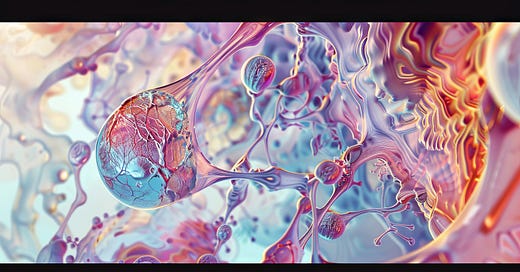Research Hit: Your Brain Fluid Helps Heal Your Brain
New research shows a critical function for a lesser known brain region and brain fluid to help heal the brain after injury.
How can brain fluid heal your brain?
It’s not the fluid itself but what’s in the fluid.
And what is brain fluid?
Yes, this may be an underestimated part of the brain and particularly a region called the choroid plexus.
The brain actually sits in a bath of what is known as cerebrospinal fluid (CSF) and this is also critical to brain health. That much is known but often we focus on the neurons and not this fluid. The choroid plexus, deep in the brain at the top of the spinal cord, is the main production site for CSF.
CSF is known to provide nourishment, help with waste removal (mostly during sleep), and protect the brain, and also may help with development of brain regions, not to mention supplying key molecules for function.
Ok so pretty important then - but does this help with brain repair?
Yes, this is precisely what Aleksandr Taranov et al. of the University of Cincinnati wanted to find out.
As I’ve mentioned in other articles, the brain has limited capacity to replace brain cells in what is known as neurogenesis. This is mostly limited to regions such as the hippocampus but in the case of stroke, for example, we know that there is some rebuilding and growth of brain neurons.
These come from immature brain cells known as neuroblasts - it could be that these can be built locally but stem cells are not present in most of the brain, so that is not possible, and it could therefore also be that they are moved through the brain in the fluid.
Intriguing, and is this the case?
Well according to this research that seems to be happening. In animal models removing the choroid plexus (and subsequent reduction in CSF) led to a reduction of neuroblasts.
When applying this to a model of ischemic stroke, the team found fewer neuroblasts migrating to the lesion site and repairing the damage caused by a stroke.
“It appears the choroid plexus keeps a garrison of regenerative cells that are ready to be deployed to injured areas in the brain in animal models of stroke. Further research is needed to confirm whether this also occurs in human brains.”
Wow, so how can we apply this to humans?
Ok that will be for future research - the obvious is that sleep is the time when this detoxification, and more movement of fluid through the brain, happens. This is why we we feel tired after injury - but this is also critical for our daily functioning.
Get your sleep!
Reference
Aleksandr Taranov, Alicia Bedolla, Eri Iwasawa, et al.
The choroid plexus maintains adult brain ventricles and subventricular zone neuroblast pool, which facilitates poststroke neurogenesis.
Proceedings of the National Academy of Sciences, 2024; 121 (28)
DOI: 10.1073/pnas.2400213121




